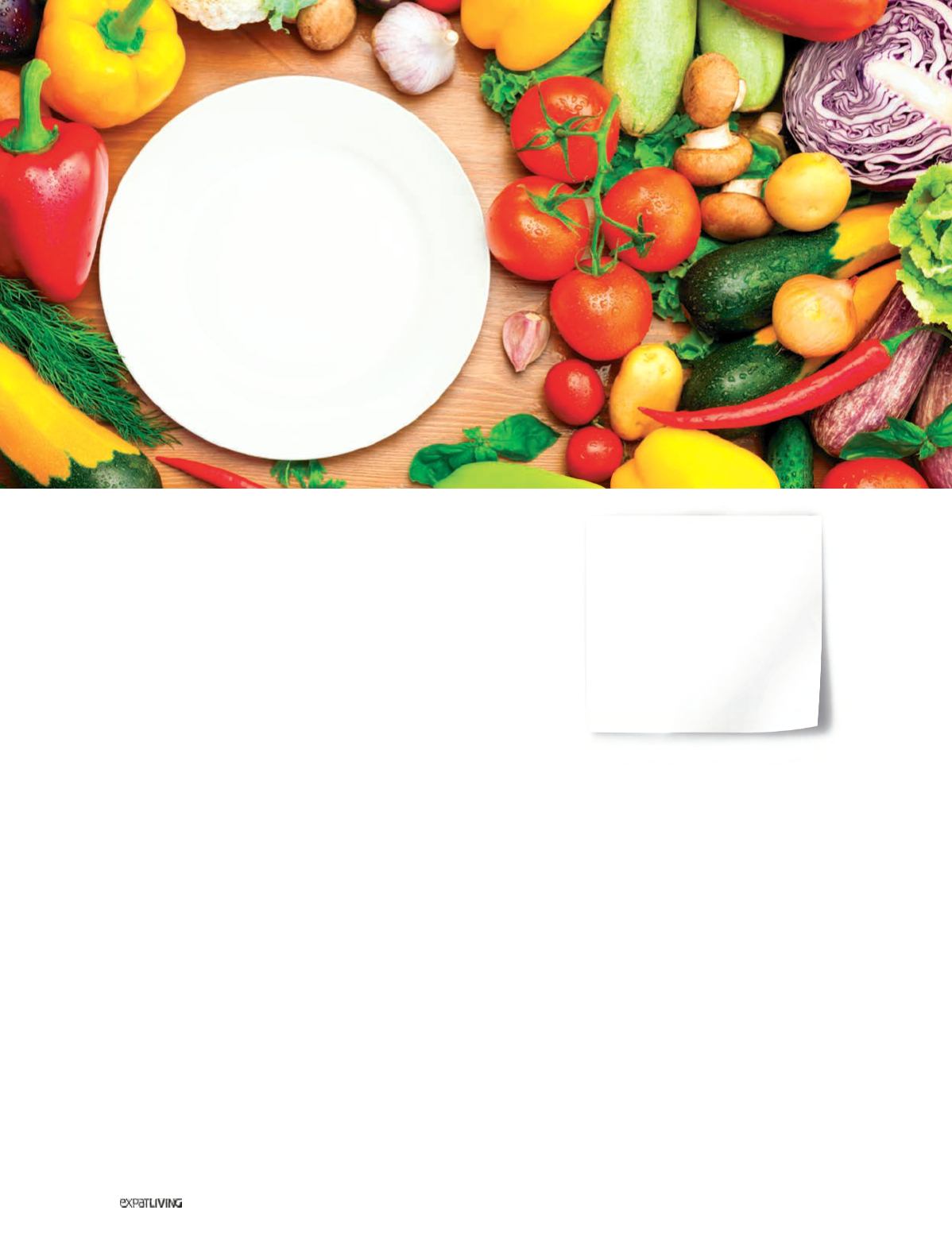

HEALTH&FITNESS
322
Jun14
What does the term “organic”
actually mean?
Something’s officially organic when
more than 95 percent of its ingredients
are labelled “certified organic” by the
United States Department of Agriculture
(USDA) or another accredited certifying
agent. Aproduct that’s “madewithorganic
ingredients” contains only 70 percent or
less of certified organic products.
Only a handful of countries issue
o rgan i c ce r t i f i ca t i ons t h rough
accredited third-party organisations.
They include the US, Canada, members
of the European Union, Australia, New
Zealand, Japan and Thailand.
What if something is labelled as
“all natural”?
The “all natural” description is not
associated with legal guidelines and
is mostly just a marketing ploy. We can
only be sure of the “natural” aspect of
a product if we carefully read the food
label or if it boasts an official organic
certification logo.
I’ll admit, I knew eating organic food was a healthy lifestyle choice,
but remained sceptical about it being more of a trend than necessity
– and a scheme to get consumers to shell out some extra cash for
groceries. It turns out, however, that going organic is one of the
best things we can do for our bodies. Naturopathic doctor, SIGRID
GROBYS – Canadian expat and resident naturopath at COMO
Shambhala Urban Escape – explained to me the benefits of buying
organic, and what actually certifies a product as organic.
So, what makes something
“certified organic”?
Organic agriculture prohibits the
use of synthetic pesticides, whereas
industrial agriculture practices focus
on productivity, utilising synthetic
fertilisers and pesticides to create
visually appealing produce, free from
imperfections, that consumers want
to buy. USDA organic standards also
require that farmers employ methods
that maximise soil health, conserve
water and reduce air pollution.
Conventional livestock production
generally involves raising animals in
cramped conditions, and regularly using
antibiotics to prevent the infections that
strike animals raised in such confined
spaces. Growth hormones are used to
speed up development, and genetically
modified organisms (GMOs) are used
in the animal feed, so you end up
consuming them. Meat is certified
organic when animals are free to roam,
have access to the outdoors and are
given only organic feed.
What’s the difference between
organic meat versus grain-fed or
grass-fed meat?
While certified organic means the
animals are fed an organic diet, “grass-
fed” is when the animals are given grass
to eat instead of organic feed or grains.
Grass-fed animals are healthier, with a
more balanced ratio of muscle to fat.
“Grain-fed” animals are given grain in
their diets, making for faster weight gain
and fattier, more marbled meat.
Are “free-range eggs” considered
organic?
Eggs with no special label come from
caged hens that have no space to roam
or spread their wings. “Cage-free eggs”
means the same thing as “free-range”
eggs – the hens are allowed to roam and
socialise, but do not necessarily have
access to outdoors. “Organic-feed” eggs
means that the hens are fed an organic
diet, with no pesticides, hormones or
You Are
What You
Eat
What the “org nic” label
really represents
By Amy Greenburg
Farmers aren’t the only ones
who must comply with organic-
certified criteria. Companies
that process or handle organic
products must meet USDA
standards to become officially
certified, too, making the entire
process – from planting, to
processing, to delivering –
certified organic.



















